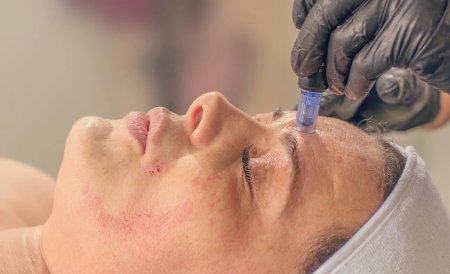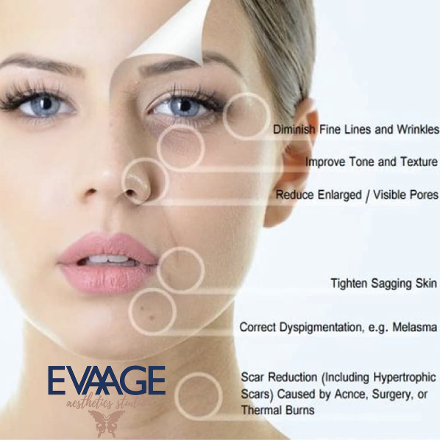

MICRONEEDLING
(Collagen Induction Therapy)
What is Microneedling? Microneedling, also known as Collagen Induction Therapy, is a cosmetic procedure that works by encouraging your skin to make more collagen through stimulation. By causing slight trauma to the epidermal layer of the skin, the skin will respond by making new collagen-rich tissue. This new epidermis tissue is, in turn, more even in tone and texture. It’s normal for the skin to lose collagen via age or injury. By encouraging the skin to make new tissue, there may be more collagen to help make the skin firmer, too.
Microneedling (Collagen Induction Therapy or C.I.T) can be safely scheduled every 4-6 weeks, until desired results are achieved. A minimum of 3 treatments is recommended for most areas of concern, however an average of 6 treatments may be needed when treating scars. The expected downtime is 24-72 hours, depending on how your skin reacts and rejuvenates. Most people will experience a sensation similar to a slight sunburn or windburn. Following post-procedure aftercare instructions is very important.
While results may vary depending on the uniqueness of your skin and how it receives the treatment, many people have reported seeing results in as little as 1 week.
What are the benefits of Microneedling?
- Helps to diminish appearance of Acne Scars, Fine Lines, and Wrinkles
- Dramatically increases the effectiveness and penetration of active ingredients in skincare products.
- Stimulates Collagen Production
- Cost effective when compared to other resurfacing procedures.
- Can be performed on all skin types
- It can be used on all areas of the face, including the delicate areas around the eyes, mouth, and neck.
- Improves Tone and Texture of Skin
- Aids in the reduction of Pore Size
What are the contraindications? What would prevent someone from receiving a Microneedling procedure? Although it is impossible to list every potential risk and complication, the following conditions are recognized as contraindications, meaning that it would not be safe for you to receive this service.
- Active acne
- Active infection of any type, such as herpes simplex or flat warts.
- Any raised lesions
- Any recent chemical peel procedure
- Chemotherapy or radiation
- Eczema or dermatitis
- Family history of hypertrophic scarring or keloid formation
- Hemophilia
- Hormonal therapy that produces thick pigmentation
- Moles
- Oral blood thinner medications
- Pregnancy
- Recent use of topical agents such as glycolic acids, alpha-hydroxy acids and Retin-A
- Rosacea
- Scleroderma
- Skin Cancer
- Sunburn
- Tattoos
- Telangiectasia/erythema may be worsened or brought out by exfoliation
- Thick, dark facial hair
- Uncontrolled diabetes
- Use of Accutane within the last year
- Vascular lesions
Is satisfaction guaranteed? The majority of clients receive noticeable results when receiving a series of treatments and a commitment to a daily skin care regimen. However, this outcome cannot be guaranteed as maximum results are highly dependent on age, cumulative sun exposure, health, lifestyle, genetic traits, general skin condition, and willingness to follow recommended protocols. Be aware that many changes may occur deeper within the skin over time. To continue the maintenance of your skin after you complete your treatment(s), your aesthetician may inform you of long-term age management programs.
What should I expect after the procedure? Skin may feel tight, and appear red...similar to that of a mild sunburn. You may experience some slight sensitivity in the next 24-48 hours, and some clients have reported some minor/mild bruising. For more detailed information, see the Microneedling Aftercare instructions by clicking on the Aftercare Tab.
As always, if you have any questions or concerns, please do not hesitate to reach out!
